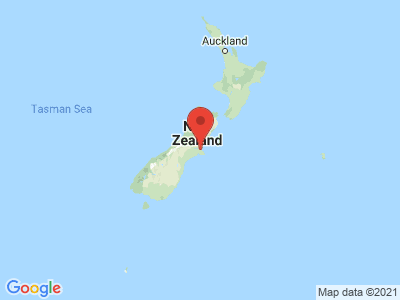Climate Table Christchurch
Jan | Feb | Mar | Apr | May | Jun | Jul | Aug | Sep | Oct | Nov | Dec | |
|---|---|---|---|---|---|---|---|---|---|---|---|---|
| Max. Temperature | 22° | 22° | 20° | 17° | 14° | 11° | 11° | 12° | 15° | 17° | 19° | 21° |
| Min. Temperature | 12° | 12° | 10° | 7° | 4° | 1° | 1° | 2° | 4° | 7° | 9° | 11° |
| Sun Hours | 7 | 7 | 5 | 5 | 4 | 4 | 4 | 5 | 6 | 7 | 7 | 7 |
| Rain Days | 6 | 5 | 7 | 6 | 8 | 7 | 8 | 7 | 6 | 7 | 7 | 6 |
The climate year of Christchurch
Already before the settlement by the Europeans from about 1830 Maori tribes settled on the present city area. However, urban development did not occur until around 1850, when the First Four Ships anchored in Lyttelton Harbour. Only a few years later, on July 31, 1856, Christchurch was granted city rights and is thus today considered the oldest city in New Zealand. According to a 2013 census, about 340,000 people live in the city, making Christchurch even the second largest city in New Zealand after Auckland. Christchurch is considered the "most English" city in New Zealand, which is reflected above all in its architecture and the loving design of the numerous parks and green spaces - hence the nickname "Garden City". The city is located on the Pacific Pegasus Bay. The prevailing maritime climate is characterized by fairly mild temperatures, although winters can get quite chilly. Unlike other regions in New Zealand, snowfall is rare but possible. However, Christchurch has been hit by two strong earthquakes in the recent past, which have been responsible for devastating damage.
General information about Christchurch
.
On September 4, 2010, Christchurch was hit by the first earthquake. Measuring 7.1 on the Richter scale, it was stronger than the most devastating to date in Hawkes Bay in 1931, but the city was hit even worse on February 22, 2011. Although this earthquake was weaker than the first, with a magnitude of 6.1, it occurred closer to the city center. Even today, in 2014, large parts of the city center are still closed off due to the danger of collapse. However, the city is gradually recovering, and many sights have reopened, such as Cathedral Square with the sculpture "The Chalice". In place of the completely destroyed Christchurch Cathedral now stands the Cardboard Cathedral built of cardboard rolls, wood, steel and concrete. The Canterbury Museum with exhibitions on the history of the Antarctic expeditions - because Christchurch was the starting point of the great expeditions in the 19th century - is definitely worth a visit.
Tourism Christchurch
The sunniest and warmest month is January, with an average temperature of 17.4 °C, although it can get much warmer. During this time, the sun shines almost eight hours a day. The rainiest and also coldest month, on the other hand, is July. On average, it is about 6.6 °C cool, although temperatures can also fall around 0 °C. The humidity is quite high at about 87.3%, but otherwise it rains quite little compared to other regions in New Zealand.


